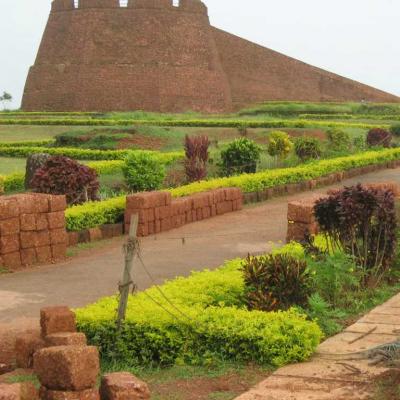Kasargod
The northernmost district of Kerala
Kasargod
-
Location : Kerala
-
Best Time : October - February
-
Railway Station : Kasargod
-
Airport : Manglore
Kasargod district is known as the crown of state Kerala. It is surrounded by the Western Ghats in the east, the Arabian Sea in the west, Dakshina Kannada District of Karnataka in the North, and Kannur District in the South. Kasargod is the district with the highest number of rivers in Kerala. The district is also famous for its handlooms and a long coastline.
Kasargod district is also known as:
Land of Forts (There are a lot of forts in Kasargod).
Land of Rivers (Has the maximum number of rivers in Kerala).
Land of Gods ( Because of its cultural uniqueness).
Land of Seven languages (The languages Malayalam, Tulu, Kannada, Marathi, Konkani, Beary, and Urdu is spoken here).
Bekal Fort, Chandragiri Fort, Edayilakkad, Kanwatheertha beach, Kappil beach, Kottanchery hills, Mayipady palace, Pallikkara beach, Ranipuram are the top tourist spots in Kasargod.
Bekal Fort, the largest fort in Kerala which spreads over 40 acres is one of the main attractions in Kasargod. Almost three-quarters of its exterior is in contact with water. The Malik Dinar Mosque, one of the mosques believed to have been founded by Malik Dinar the Persian scholar and traveler, The Chandragiri Fort a squarish fort, Ananthapuram Temple the only lake temple in Kerala, Ranipuram or Madathumala peak the highest peak in the Kasargod district adds more diverseness for tourist attraction. These destinations and some unique cultural facts make Kasargod one of the top tourist places in Kerala.
Travel Tips
- Must visit the largest fort in Kerala, The Bekel Fort.
- A divine visit to Anantha Lake Temple, a Hindu temple built in the middle of a lake.
- The region enjoys tropical to subtropical climate.
- Travel during the summertime is not recommended.
- The average maximum and minimum temperatures are 37 degrees Celsius and 17 degrees Celsius respectively.
Trending In Kasargod
Top Attractions in Kasargod
Detailed Information
Kasaragod is a place where human settlements are from the Great Stone Age. Pottery, copper, and ancient ironworks provide hints for ancient humans who lived and worship agriculture and nature. Vedic religion entered Kerala through Konkan and Tulu as per the views of Historians. Kasargod was an important trade center. Many Arab travelers, who came to Kerala between the 9th and 14th centuries A.D., visited Kasargod because of the importance of trade. They called this area Harkwillia. The Portuguese traveler, Barbose who visited Kumbla near Kasargod in 1514, had recorded that coir was imported from Male Island and rice was exported to there.
Kasargod was part of the Kumbala Kingdom in which there were 64 Tulu and Malayalam villages. It was ruled by the Kolathiri king. Later they were attacked and defeated by the Vijayanagara Empire. The administration of this area was given to the Ikkeri Naikans after the decline of the Kumbala Kingdom in the 14 century,.They continued to be the rulers till the fall of the Vijayanagar empire in 16th century.
Theyyam is a ritual art form and is very popular in the northern districts of Kerala. This art form combines elements of dance, music, and drama and is associated with the worship of ancestors and heroes. It is said that the characters appearing in Theyyam, the ritualistic folk dance of northern Kerala, represent those who had helped king Kolathiri fight against the attack of the Vijayanagar empire. The two popular sacred groves, where Theyyam is performed in the Kasaragod district are Perumthitta Tharavad and Kanathoor Nalvar Bhoothasthanam. Perumthitta Tharavad is at Kottamkuzhi. The ten-day-long festival here is marked by the performance of Theyyam like Ilayur, Chamundi, and several others.
The three municipalities are Kasaragod, Kanhangad, and Neeleswaram. The first Chief Minister of Kerala EMS Namboodiripad was elected from the Nileswaram constituency in Kasaragod district.













